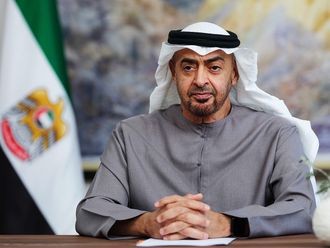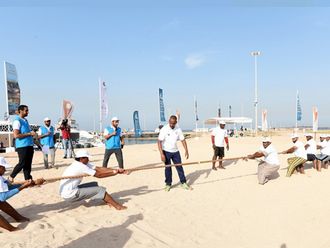UAE's oldest mosque restored, ready to welcome visitors
The Al Falayah Summer Palace of the Quwasim, which also houses the oldest known mosque in the UAE, has been restored - it will soon be ready to welcome visitors and reveal glimpses of the past. Christian Velde, resident archaeologist of Ras Al Khaimah National Museum, explains that Al Falayah palace was built in the 18th century, and served as a summer retreat of the ruling Quwasim family.
It was surrounded by palm gardens and dotted with houses – the palace was the ideal getaway from Ras Al Khaimah town and its blistering heat.
Says Velde, "The historical importance of Al Falayah dates back to the war between the Quwasim and British-Omani forces in 1819. In the summer of 1820, a peace treaty was signed between the Sheikhs of the Gulf coast and the British government in Al Falayah. This treaty can be viewed as laying the foundation of the UAE."
Restoration work on the palace was carried out by the Department of Antiquities and Museums in Ras Al Khaimah under the directives of Sheikh Sultan bin Saqr Al Qasimi, Deputy Ruler of Ras Al Khaimah.
"Al Falayah was restored using old techniques and materials. Stone walls were reinforced with wadi stones. Eroded mud bricks were replaced with new bricks of the same material and roofs were rebuilt with mangrove beams. The doors and window are new, but the carpenters were careful to follow the design."
The eastern complex comprises a row of rooms with a mud brick tower in the middle and a courtyard to the east. The mud brick tower has doors which open to either sides of the courtyard.
The northern room of the complex was used as a private majlis and doors open to both sides of the courtyard. Windows face the north and west, but there is none facing the private areas. The second room is a typical living room with a wall that separates the bathroom.
The end of the room, nearest the tower, has a stone-face depression which was probably used to store things.
"The room in the south of the tower may have been used as a stable or as a store. Another building stood on the eastern side of the courtyard and this mud-brick house was used as a kitchen and servant quarter."
Velde points out that the central tower forms the western end of the courtyard which, together with the tower, was used as the public hall. The tower was built with a majlis on the first floor. "The treaty of 1820 may have been signed there," Velde adds.
The entrance to the tower could be blocked with a large beam and served as a defence system. Above the majlis, there is a wall with holes which may have been used to fight the enemy. "The western building is a mosque which is the oldest known mosque in the UAE and was used by the family.
It may have served as the main Friday mosque of the area. The mosque has a typical plan, similar to others built in the last two centuries. It has a courtyard with a small prayer hall with several low windows. The room is ventilated by several small holes in the upper part of the room.
"One of the interesting features of the mosque is a small minbar (stand for preachers giving the sermon) which was built with two steps into the eastern wall.
"A part of the courtyard is covered to give shade to people praying outside. The eastern part of the courtyard is raised as a platform with a second mihrab (prayer niche). It may have been used during evening and morning prayers. A small raised and walled corner in the northeast was a minaret," Velde adds.
Historical home
The Al Falayah Summer Palace of the Quwasim, which also houses the oldest known mosque in the UAE, has been restored - it will soon be ready to welcome visitors and reveal glimpses of the past. Christian Velde, resident archaeologist of Ras Al Khaimah National Museum, explains that Al Falayah palace was built in the 18th century, and served as a summer retreat of the ruling Quwasim family.











